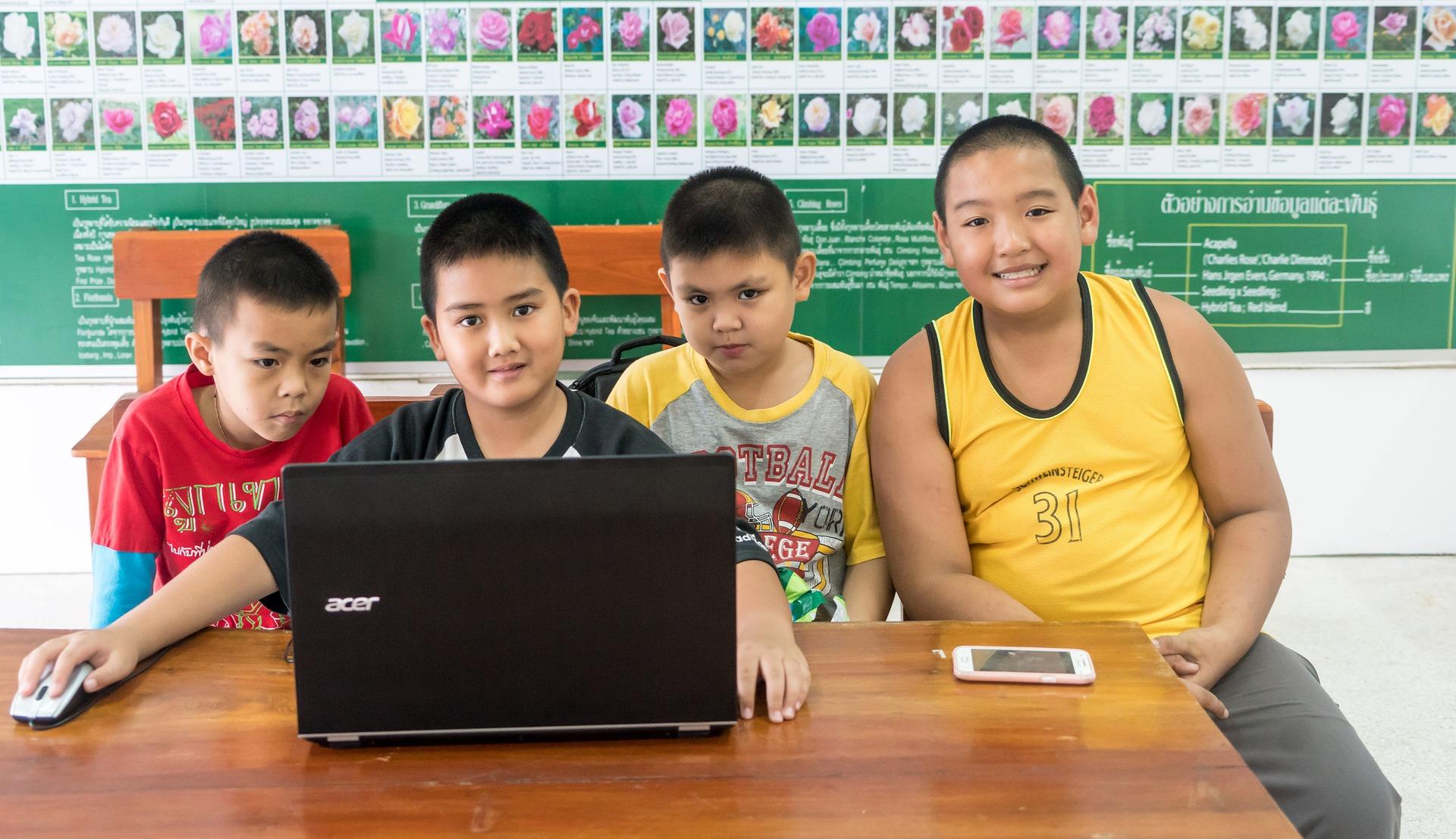People often reflect on their school days, but for many these memories are not always positive.
Of course many people thrive in schools where a traditional teaching model is the order of the day, for others depending on exam scores to prove mastery in a subject is sheer hell. Sadly, those who perform badly are seen as bad students and their efforts to see unique solutions to problems go unrewarded.
Despite the criticism from many educational camps, there is mounting evidence that the benefits of differentiated instruction, where students receive information according to a certain preference, are numerous.
Amongst all the theories surrounding how to improve a learner’s marks, could it be that how a student learns is equally to what a student learns?
In this article, you will find some of the challenges faced by learners who have to succumb to traditional teaching methods as well as a case for the effectiveness of differentiated instruction. Keep reading to find out how teachers can make the best use of their resources and their time in a differentiated learning environment.
Want to give private lessons?
Join the Superprof community and share your knowledge with inquiring and motivated students.
As Things Stand Now

Whether you are in school, either as a student or teacher, take a moment to reflect on your current learning experience.
Alternatively, cast your mind back to your school days. Do you remember how, with the exception of physical education or science practical lessons, that every lesson followed a certain formula, regardless of the subject?
In a typical scenario. Students file into class and are greeted by a teacher. The bell rings, there may be roll call, followed by a short introduction about the lesson’s topic. Learners will then usually unpack a textbook, notebook and pen. For maths, there may be a compass, ruler or protractor. The teacher begins to talk and for many students, this is the time to begin daydreaming, writing notes or drawing funny pictures.
And so, another lesson goes by, like those for the past 600 years where compulsory education has influenced society.
OK, perhaps it was only 200 years where general education became the norm in many countries.
Even so, is it not striking that through the ages, methods of teaching have remained relatively unchanged?
Also worth noting is that when students achieve high exam marks, success is generally attributed to the teacher, but poor marks seem to be an indication that the child has not worked hard enough.
In a nutshell, traditional education means that teachers teach to test.
Fortunately, another school of thought has emerged that advocates for the challenges of differentiated learning.
The Benefits of Differentiated Instruction for Special Needs Students
Amongst the many advances made in education is the acknowledgement that learning disabilities rank as one of the most divisive, but also one of the most accepting.
Dyslexia, for instance, is a prevalent learning disability where learners with an otherwise normal ability and desire to learn is hindered by the brain’s inability to process language.
The causes of dyslexia are usually either environmental or genetic and 3% to 7% of learners from all over the world are known to struggle with it.
Similarly, a condition called dyscalculia can make even basic maths acquisition a cause of for anxiety and frustration.
Even though dyslexia was pegged as a neurological condition in 1881, failures of dyslexic learners are also attributed to both poor motivation and educational practices.
In the same way, children with ADHD (attention deficit hyperactivity disorder) were quickly labelled as naughty when in fact their inability to sit still and concentrate was on account of a developmental neurological disorder. Affecting between 5 and 7% of the world’s population, it is a very common condition.
Again, even though the realisation that ADHD is a medical condition was first recognised in 1902, it was not until 1981 that it became acknowledged in the sphere of mainstream education.
Private tutoring for differentiated learning became one of the most successful interventions towards levelling the playing field in academia.
Unfortunately, there was no initiative for students who did not have special needs, but still struggled to learn.
Find tutoring jobs online.

Technology in the Classroom: Good or Bad?
Visual aids make for powerful teaching tools.
In days gone by, classroom visuals for formal education consisted of a chalk board and perhaps a world map. There may have been a frieze to show the correct way to write cursive script above the blackboard.
But as technology advanced, so did the classroom. Overhead projectors came onto the scene in 1930, video in 1951. Teachers slowly became more free to devise content that was varied and included supplementary visuals like diagrams and charts. For learners with a proclivity for visual learning, these interventions showed the effectiveness of differentiated instruction, even on a micro level.
Even the wireless radio found a place in the classroom during the 1920s. it was not long after that stations began broadcasting classes on air which of course became the precursor to the online and distance learning so prevalent today.
Strangely, despite
Astoundingly, for all of the technological advances in the last 100 years, using technology in the classroom pretty much stalled after the PC (personal computer) went mainstream.
To be sure, curricular requirements have expanded to include coding and keyboarding classes, but they still follow the traditional teaching model: the educator speaks and the learner does.
So, while technological advances have helped students learn, essentially they are confronted with the same teaching methodology that has dominated educational philosophy for centuries.
Find out what the best tutors know about differentiation in the classroom...

Teaching and Learning with Differentiating Instruction
You could say that all teaching methods devised to date are like cracking a dam with bubble gum. While they address current emergencies they do nothing to remedy the bigger problem.
To improve the learning experience of those with special needs and to kit out classrooms with extra resources are all noteworthy efforts. These, however, do not take a few basic facts into consideration:
- When students are grouped by age rather than learning styles or intellect it means that an entire group is destined to have their educational needs poorly met.
- Traditional teaching feeds the student information, yet does not show them how to use it or even how to learn. This is the opposite of how students are taught in a differentiated learning environment.
- Multiple intelligences and the effectiveness of differentiated instruction are not taken into account in a traditional learning plan.
- Summative assessments, which are the exams held at the end of every term do little to evaluate a student’s potential for learning and only reveal how well the taught information was retained.
Of course no one is faulting the hardworking parents and teachers who are doing the best to support their children with the educational tools of the day.
As an alternative, there is a theory that embraces student-centred learning which takes place in a differentiated learning environment.
Differentiation means that learners are encouraged to work in small groups that are suited to their intellectual ability and aptitude.
The advantages of differentiated instruction mean that the learning preferences of students are taken into consideration:
- Visual learners are supplied with a lot of material from which to draw their conclusions.
- Auditory learners are provided with recordings to advance their knowledge.
- Kinaesthetic learners are given the opportunity to build and create things to support their conclusions.
Regardless of the student’s learning preference, the effectiveness of differentiated instruction means that assignments are tailored to the uniqueness of the student.
Other advantages of differentiated instruction allow for teachers to circulate a room providing specific input and ongoing formative assessment rather than simply standing in front of a class.
This may sound like more work for the teacher, but the advantages of differentiated instruction for the learner is profound.
In a differentiated learning environment where activities are targeted, students are able to learn more about their unique strengths as well as the processes that suit them best.
One of the important advantages of differentiated instruction is that it fosters a learning environment of inclusion where gifted and special needs students are also catered for.
Finally, the benefits of differentiated instruction have already shown to hold too much weight to discount. When teachers take the time to create a differentiated learning environment, the results are hard to miss. Students begin to understand by design rather than simply retain information for the short term.
There are also advantages of differentiated instruction for teachers too. When students are invited to input into their learning goals and avenues for reaching them, it takes a certain amount of pressure off the teacher. This translates into effective teaching.
Don’t miss our full guide that highlights the effectiveness of differentiated instruction.
Want to give private lessons?
Join the Superprof community and share your knowledge with inquiring and motivated students.





